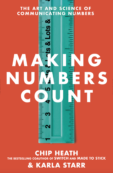From a story in the Eugene, OR Register-Guard (thanks to Len H for the link) (Update: here is a link to the same story from CBS):
Kyleray Katherman, 13, thought something was funny about the water coming from the drinking fountains at his school. So, being far more intelligent and resourceful than I was at 13, he conducted an experiment. He used a Q-tip to swab the spigots of four different drinking fountains (and also a toilet for good measure). Then he took the samples back to the lab and tested them for bacteria. (Apparently junior high is a good bit more like CSI than in my day.) Result: The toilet water was Evian compared with the drinking-fountain water.
Then, in a masterstroke of stickiness, Katherman presented his analysis of the 5 sources of water to his classmates, and without telling them where each sample came from, he asked them which source they’d prefer to drink from.
They chose the toilet water, of course. And imagine the looks on their faces when he let them know. (For that matter, imagine the look on *his* face when his punchline worked as intended.)
Think about how much more powerful it was for him to structure the presentation this way, getting people to commit to a preference for toilet water, rather than launching into his presentation with a typical opener: “Based on my analysis of the drinking water in this school, there was a significantly higher level of bacteria in the drinking fountains than in the toilets.”



